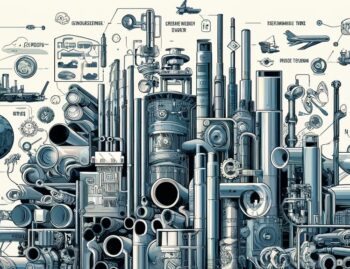While there may be no single and quickly implementable cure-all for Brazil’s steel woes, there are free market solutions, traditional and common sense government-policy solutions, and cutting-edge technological solutions that can all contribute to a hard-fought, but long-enduring recovery.
The present state of Brazil’s steel industry
From the days of the Second World War, when steel was in high demand to fuel the Allied war machine, through the late-80s private company-led Brazilian steel boom, and up to till the present day, steel has accounted for a large percentage of Brazil’s export economy. This is due partly to abundance of iron ore (the word “brazil” is even derived from berzel, the Hebrew word for “iron”), and partly to the ingenuity and productivity of Brazil’s people to take advantage of their nation’s natural resources.
Today, Brazil is still a world leader in steel production, the largest by far in Latin America, but has seen huge chunks of steel profits and steel exports disappear in the last several years.
In 2012, exports decreased 10%; in 2013, by 13%; and in 2014’s first quarter against 2013’s first quarter, by 19%. The fall in profits has been even higher than that in export volume.
2012 was a rough year for the sector, with exports decreasing 9.6% in volume and 16.7% in value, compared to 2011. The year of 2013 was also far from presenting the desired results, since another decrease, of around 13%, is expected to be confirmed.
The factors that contributed to the current condition
Brazil has not been immune to the global surge in steel production and its coat-tail price and demand lowering effects. This global phenomenon has had its effect on every nation, but things run a little deeper than to just say that.
Along with the decline of U. S. (despite moderate recent comebacks) and Western steel, there has been an accompanying rise in the steel industry in China, India, and numerous smaller nations. Nearly half the world’s steel is now made in China, which is not so dependent on imports now from nations like Brazil.
Technological and infrastructural advances in many nations’ steel industries has often been pressed forward by government subsidies; slothfulness to innovate when support is guaranteed and satisfaction with the status quo when your nation has long sat on top, can be the downside of government interference.
This two-edged sword has allowed newcomers to fight their way into becoming world leaders in the steel market through state propping up of the industry, but has let the old steel giants nations fall into relative complacency.
Both edges of this sword seem to have hurt Brazil.
The world industry peaked in 2007, and with the crash of the U. S. construction industry in 2008, steel, an industry intricately connected to construction, fell as well. Another steel-dependent enterprise, the automotive industry, soon followed suit. When the U. S. economy slumped, it affected other nations, including Brazil.











